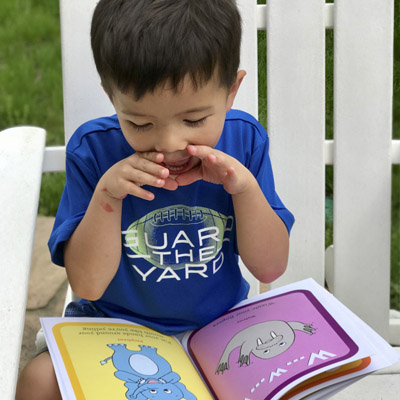
Online Coding & Robotic Lab
With an increased focus on technology in our world, coding has become an important subject for everyone to understand. Worldwide, schools are introducing coding in their classrooms, and students are being taught the basic concepts of coding from an early age. There are so many reasons that coding is important to learn, and the benefits extend beyond the computer.
The workforce is shifting and individuals with skills in computer science and computer programming are highly valued and sought after. The earlier children learn to code, the better their chance at success.
What is coding ?
Put simply, Coding is the a method of communicating with a computer. It is using a language that a computer understands to give computer instructions in order to perform specific functions. Coding allows us to create things such as computer software, websites, apps and video games.
There are various types of different code, depending on what you want to develop. And different “programming languages” that each have their own set of rules. But basically, coding is giving instructions to a computer in order to produce a desired outcome.

Help your kids learn to code !
Before we get to talking about why every child should learn to code, you may have come here looking to find out HOW you can teach your child to code. It’s easy to get started teaching children to code, even if you don’t have any coding experience yourself! In fact, we’ve compiled a list of coding concepts even 5 year olds can understand here.
But why is it important to learn how to code ?
If we want to set our children up for academic success, every child should learn to code. Coding for kids not only helps improve their mathematics and writing skills but also gives them valuable skills in life and eventually in the workforce. There are various reasons why coding is important to learn and why coding should be taught in schools from an early age. The early children learn to code, the better their chance at success.

Here are 7 major reasons why coding is important to learn for kids:
- Programming helps children learn to problem-solve
- Computer programming gives kids a challenge and helps them develop resilience
- Coding teaches children how to think & their logical thinking
- A child expands their creativity when they learn how to code
- Coding helps children learn how to have fun with math
- Coding helps students build persistence & communication
- Computer programming is the future

Robotics lab Setup
These days children have access to so many different types of programs. There is something for everyone’s interests. From the arts to music to science and math, kids have opportunities to explore a variety of subjects to find their niche.
In today’s technology-driven world, it’s important now more than ever to prepare students for the future. Teaching robotics to young students throughout their schooling can increase their ability to be creative and innovative thinkers and more productive members of society. Many governments have already recognized the importance of robotics in the classroom and have begun to create programs and laws that would incorporate them into their public education system. By teaching our students the basics of robotics, we can open a whole new world to them and exciting opportunities that they wouldn’t have access to otherwise.
In reality, everything that we do is influenced by technology. Surprisingly, many parents are not sure whether they should introduce their children to technology at an early age. The question that many are asking is whether robotics can help their children to become innovative. In order to understand why you should allow your child to learn about robotics, it is very important that you understand what robotics is.

What exactly is robotics?
Essentially, a robot is a mechanical device program to follow a set of instructions. The robot has a processing unit, sensors to perceive its environment, and motors and actuators to move its limbs or wheels. It may speak, make other sounds, or flash with lights and colors in response to the environment as per instructions. Robots need the ability to follow programmed instructions and not just be controlled remotely.
5 Reasons Why your Children Should Learn Robotics
- Robotics programs develop problem-solving skills and creativity
- Robotics teaches science and math concepts
- Robotics is an Introduction to Programming
- Robotics programming builds self-confidence
- Guarantees your children’s employment when they grow up
We at Pace Pinnacle Education Offer Immersive Coding & Robotic solutions to schools, Colleges, Institutes & Other Educational Organisation who are interested in helping their children explore the fun filled opportunistic future.


AI and Computer Science is Foundational for Every Student
We believe that AI and computing is so fundamental to understanding and participating in society that it is valuable for every student to learn as part of a modern education. We see AI as a liberal art, a subject that provides students with a critical lens for interpreting the world around them. Computer science prepares all students to be active and informed contributors to our increasingly technological society whether they pursue careers in technology or not. Coding and AI can be life- changing, not just skill training.
Teachers in Classrooms
We believe students learn best with the help of an empowered teacher. We design our materials for a classroom setting and provide teachers robust supports that enable them to understand and perform their critical role in supporting student learning. Because teachers know their students best, we empower them to make choices within the curriculum, even as we recommend and support a variety of pedagogical approaches. Knowing that many of our teachers are new to computer science themselves, our resources and strategies specifically target their needs.

Student Engagement and Learning
We believe that students learn best when they are intrinsically motivated. We prioritize learning experiences that are active, relevant to students’ lives, and provide students authentic choice. We encourage students to be curious, solve personally relevant problems and to express themselves through creation. Learning is an inherently social activity, so we interweave lessons with discussions, presentations, peer feedback, and shared reflections. As students proceed through our pathway, we increasingly shift responsibility to students to formulate their own questions, develop their own solutions, and critique their own work.
Curriculum as a Service
We believe that curriculum is a service, not just a product. Along with producing high quality materials, we seek to build and nourish communities of teachers by providing support and channels for communication and feedback. Our products and materials are not static entities, but a living and breathing body of work that is responsive to feedback and changing conditions. To ensure ubiquitous access to our curriculum and tools, they are web-based and cross-platform, and will forever be free to use and openly licensed under a Creative Commons license.

Role of the Teacher
We design curriculum with the idea that the instructor will act as the lead learner. As the lead learner, the role of the teacher shifts from being the source of knowledge to being a leader in seeking knowledge. The lead learner’s mantra is: “I may not know the answer, but I know that together we can figure it out.” A very practical residue of this is that we never ask a teacher to lecture or offer the first explanation of a CS concept. We want the class activity to do the work of exposing the concept to students allowing the teacher to shape meaning from what they have experienced. We also expect teachers to act as the curator of materials. Our curricula include an abundance of materials and teaching strategies - too many to use at once - with the expectation that teachers have the professional expertise to determine how to best conduct an engaging and relevant class for their own students.

The Classroom Community
Our lessons almost always call for students to interact with other students in the class in some way. Whether it’s simply conferring with a partner during a warmup discussion, or engaging in a long-term group project, our belief is that a classroom where students are communicating, solving problems, and creating things is a classroom that not only leads to active and better learning for students, but also leads to a more inclusive classroom culture in which all students share ideas and listen to ideas of others. For example, classroom discussions usually follow a Think-Pair-Share pattern; we ask students to write computer code in pairs; and we strive to include projects for teams in which everyone must play a critical role.


